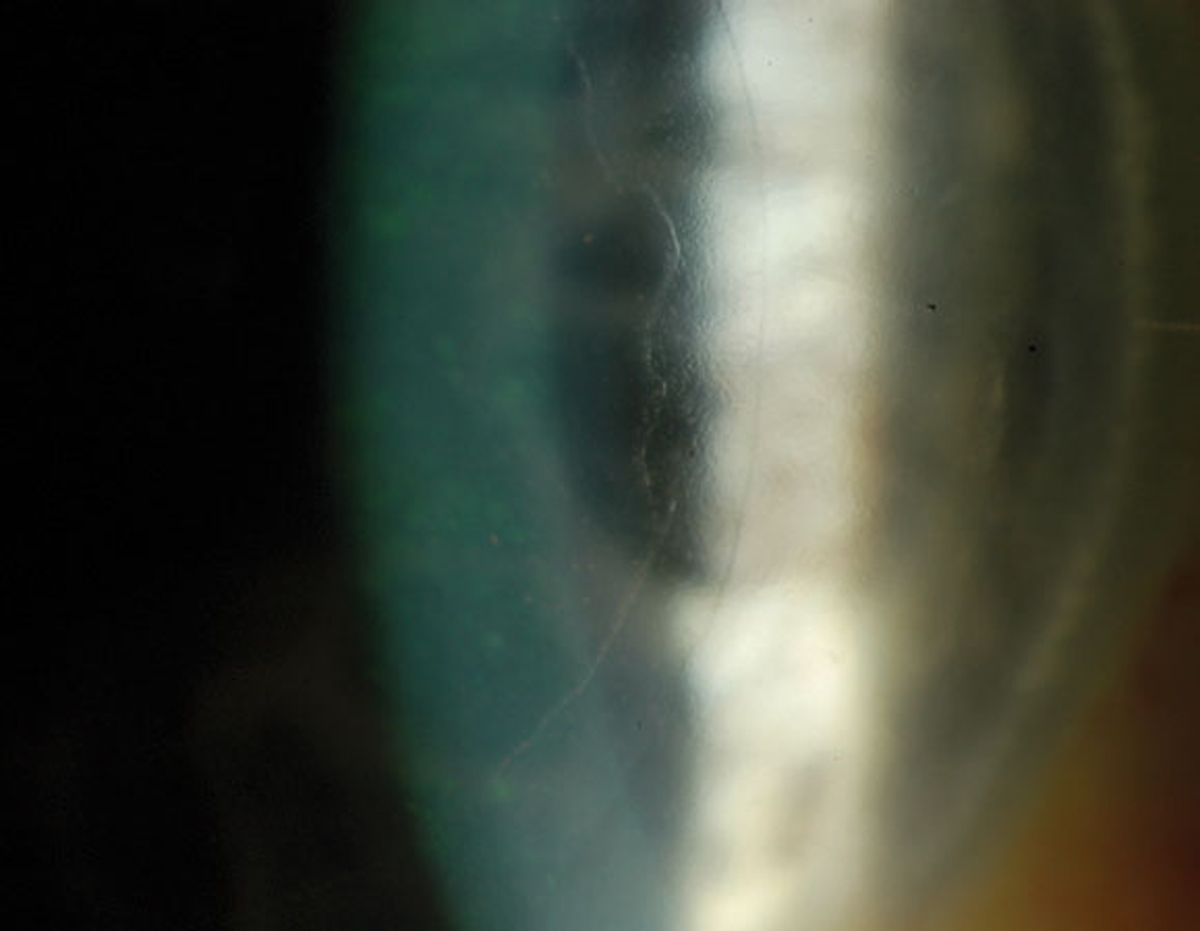 |
Thinner DSAEK or DMEK parameters may result in better visual outcomes. Photo: Andrew Steele, OD. Click image to enlarge. |
Refractive outcomes post-endothelial keratoplasty depend in part on corneal thickness and curvature after the procedure. The subsequent anatomic change from a donor lenticule thicker than what was removed has been hypothesized to induce a hyperopic shift, as with Descemet’s stripping automated endothelial keratoplasty (DSAEK) and, to a lesser extent, Descemet’s membrane endothelial keratoplasty (DMEK), which replaces the same amount of corneal tissue removed.
Ultra-thin DSAEK is a hybrid of the two and uses less tissue than DSAEK. In a post-hoc sub-analysis of the randomized controlled DETECT trial, researchers examined the effects of ultra-thin DSAEK and DMEK on corneal power measurements. They found no difference in changes of corneal measures.
A total of 50 eyes of 38 patients with Fuchs’ endothelial dystrophy or pseudophakic bullous keratopathy were randomized to receive either DMEK or ultra-thin DSAEK. The trial used ultra-thin DSAEK tissue with an average thickness of 73±12µm. (DMEK is usually 10µm to 15µm thick.) The researchers conducted corneal measurements using Scheimpflug imaging.
They reported a mean hyperopic shift in total corneal refractive power from baseline to 12 months of 0.8D in the DMEK group and 0.69D in the ultra-thin DSAEK group. Posterior corneal curvature steepened by 0.42D and 0.54D in the DMEK and ultra-thin DSAEK groups, respectively. All changes were significant from baseline, but there were no differences in total corneal refractive power or posterior corneal curvature between the two procedures.
“Sustained steepening in posterior corneal curvature with loss in total corneal power contributes to hyperopic shifts after endothelial keratoplasty,” the researchers explained in their paper. “Surgeons may want to request these thinner DSAEK parameters to achieve comparable levels of refractive shift to DMEK. These changes may take longer to stabilize after DMEK. While an average hyperopic shift was observed after both DMEK and ultra-thin DSAEK, some patients had myopic shift at six or 12 months postoperatively.” The team has yet to identify preoperative predictors for refractive changes.
Chamberlain W, Shen E, Werner S, et al. Changes in corneal power up to two years after endothelial keratoplasty: results from the randomized controlled DETECT trial. Am J Ophthalmol. July 19, 2022. [Epub ahead of print]. |


